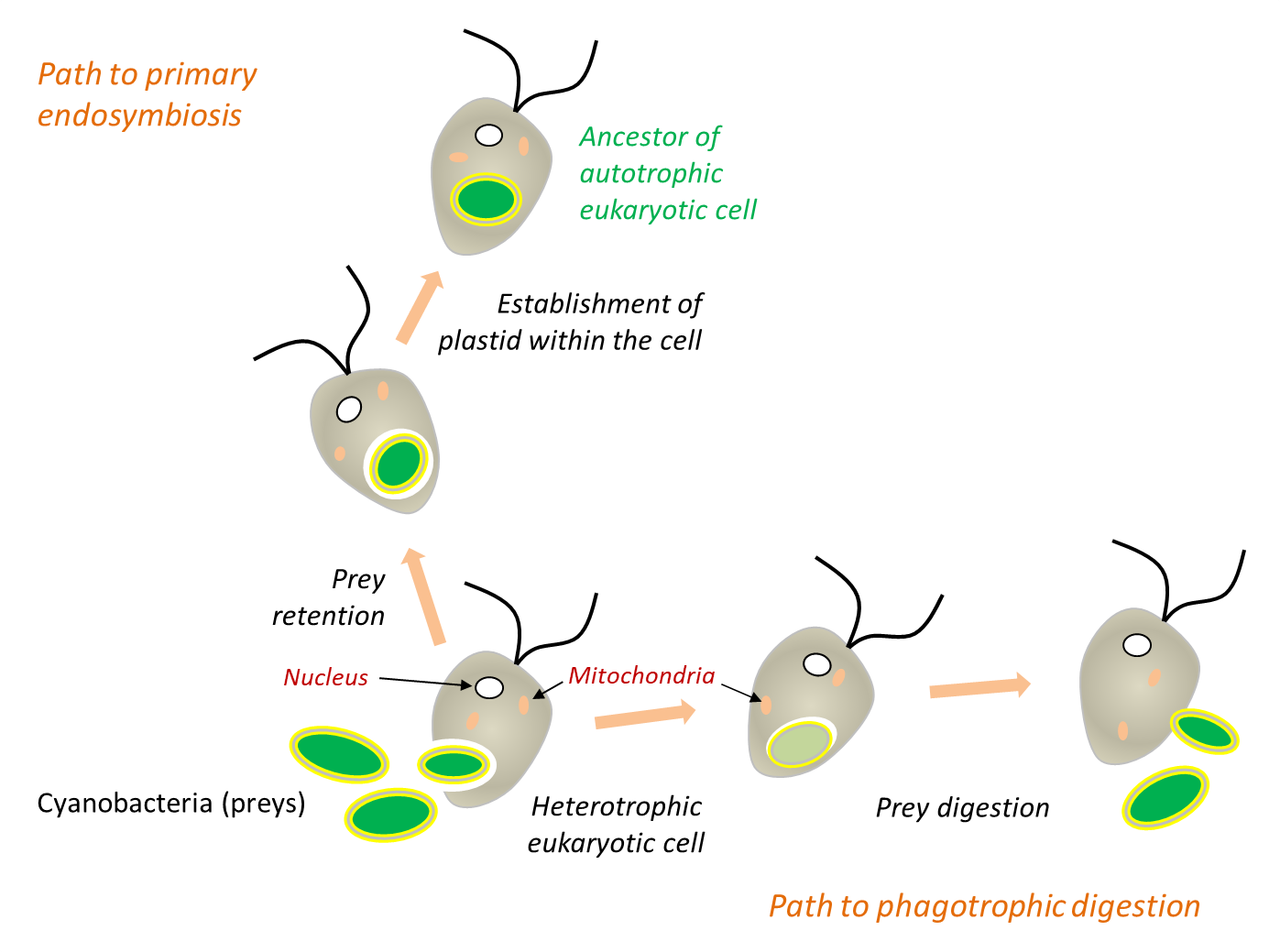
The presence of DNA in mitochondria and chloroplast supports the hypothesis that
(a) Mitochondria and chloroplast both originated as independent free living organisms.
(b) Glycolysis occurs in mitochondria and chloroplast both.
(c) ATP is produced in mitochondria and chloroplast both.
(d) Mitochondria and chloroplast undergo meiosis and mitosis independent of the nucleus.
Answer
502.8k+ views
Hint: This is comparable in size to bacteria, mitochondria, and chloroplasts. Bacteria also have mitochondrial and chloroplast-like DNA and ribosomes, based on this and other evidence.
Complete answer : Both chloroplast and mitochondria were once independent free living beings, and eventually were trapped as endosymbionts in eukaryotic cells. This theory is backed by several examples of these two organelles being surrounded by double membranes, possessing their own circular DNA as a prokaryotic chromosome, Have their own 70S-type ribosomes, like prokaryotic ribosomes, which do not rely on the nucleus for their replication, but can increase in numbers by fissioning like bacteria.
High copy number - A mitochondria or chloroplast has many copies of its DNA, and one average cell has several mitochondria (and chloroplasts, in the case of a plant cell). As a result , cells typically have several versions of mitochondrial and chloroplast DNA-several thousands of them.
Random segregation- During mitosis and meiosis, mitochondria and chloroplasts (and the genes they carry) are distributed at random to the daughter cells. As the cell divides, the organelles that exist on the opposite sides of the cleavage furrow or cell plate end up in different daughter cells
Single-parent inheritance- Sometimes non-nuclear DNA is inherited uniparently, meaning children either receive DNA from the male or female parent, not both. For example, in humans children get their mother mitochondrial DNA (but not their father).
So, the correct answer is ‘Mitochondria and chloroplast both originated as independent free living organisms’
Note: Scientists assume that host cells and bacteria developed endosymbiotic connections long ago, when individual host cells gained aerobic (oxygen-using) and photosynthetic bacteria but did not kill both. Via millions of years of evolution, Mitochondria became the aerobic bacteria and chloroplasts became the photosynthetic bacteria.

Fig. Endosymbiosis
Complete answer : Both chloroplast and mitochondria were once independent free living beings, and eventually were trapped as endosymbionts in eukaryotic cells. This theory is backed by several examples of these two organelles being surrounded by double membranes, possessing their own circular DNA as a prokaryotic chromosome, Have their own 70S-type ribosomes, like prokaryotic ribosomes, which do not rely on the nucleus for their replication, but can increase in numbers by fissioning like bacteria.
High copy number - A mitochondria or chloroplast has many copies of its DNA, and one average cell has several mitochondria (and chloroplasts, in the case of a plant cell). As a result , cells typically have several versions of mitochondrial and chloroplast DNA-several thousands of them.
Random segregation- During mitosis and meiosis, mitochondria and chloroplasts (and the genes they carry) are distributed at random to the daughter cells. As the cell divides, the organelles that exist on the opposite sides of the cleavage furrow or cell plate end up in different daughter cells
Single-parent inheritance- Sometimes non-nuclear DNA is inherited uniparently, meaning children either receive DNA from the male or female parent, not both. For example, in humans children get their mother mitochondrial DNA (but not their father).
So, the correct answer is ‘Mitochondria and chloroplast both originated as independent free living organisms’
Note: Scientists assume that host cells and bacteria developed endosymbiotic connections long ago, when individual host cells gained aerobic (oxygen-using) and photosynthetic bacteria but did not kill both. Via millions of years of evolution, Mitochondria became the aerobic bacteria and chloroplasts became the photosynthetic bacteria.

Fig. Endosymbiosis
Recently Updated Pages
Master Class 9 General Knowledge: Engaging Questions & Answers for Success

Master Class 9 English: Engaging Questions & Answers for Success

Master Class 9 Science: Engaging Questions & Answers for Success

Master Class 9 Social Science: Engaging Questions & Answers for Success

Master Class 9 Maths: Engaging Questions & Answers for Success

Class 9 Question and Answer - Your Ultimate Solutions Guide

Trending doubts
Give 10 examples of unisexual and bisexual flowers

Draw a labelled sketch of the human eye class 12 physics CBSE

Differentiate between homogeneous and heterogeneous class 12 chemistry CBSE

Differentiate between insitu conservation and exsitu class 12 biology CBSE

What are the major means of transport Explain each class 12 social science CBSE

Draw a diagram of a flower and name the parts class 12 biology ICSE




